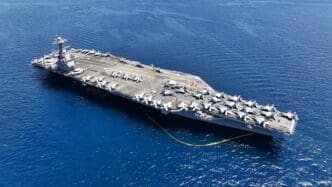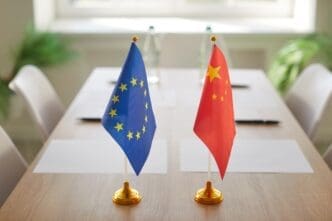Amid Europe’s biggest conflict since World War II, approximately 11,000 North Korean soldiers have been deployed to Russia, engaging in active combat alongside Russian forces in the ongoing Ukrainian conflict.
These North Korean troops, whose presence remains unacknowledged by Moscow or Pyongyang, are said to have suffered several hundred casualties in the Kursk region, according to U.S. officials. Their engagements reportedly include infantry attacks reminiscent of tactics from the Korean War, employing ranks of soldiers to overwhelm positions. The reliability of these troops has been a topic of much debate given their lack of real battle experience, which becomes a significant factor in the complex and unforgiving environment of modern warfare in Ukraine.
While some analysts describe these soldiers as inexperienced and not yet battle-hardened, others caution against underestimating their capabilities. Leading this line of thought is the assertion that North Korean leader Kim Jong Un has possibly dispatched the ‘Storm Corps,’ an elite force within the North Korean military known for their rigorous training and loyalty. This unit is allegedly comparable to prestigious military groups like the U.S. Navy SEALs or Britain’s SAS. Propaganda from North Korea highlights their training, featuring intense physical demonstrations, which some experts view as psychological readiness for the harsh realities of warfare.
Despite training regimens, North Korean troops face challenges beyond their control. Drone warfare and advanced surveillance on the Ukrainian front lines introduce complexities that have reportedly overwhelmed Russian tactics as well, characterized as ‘meat-grinder’ strategies. This modern battlefield differs significantly, making these soldiers ‘fair game’ as potential targets for modern weapons, including those supplied by the United States.
Further complicating these deployments are the language barriers, as Russian forces attempt to integrate the North Korean soldiers into their ranks. The training in Russia reportedly includes artillery handling, operating drones, and basic infantry operations crucial for trench warfare. However, integration success may hinge on communication capabilities, which have purportedly faced issues, including teaching basic military commands to North Korean troops.
Historically, North Korean soldiers have been subjected to harsh conditions, as noted by defectors like Kim Seong-han, who recounts challenges such as malnutrition and grueling marches. Such accounts paint a vivid picture of their military life marked by hardships. Today, while special units might enjoy better provisioning, the general military population continues to suffer from shortages and inadequate living conditions, with reports of soldiers taking desperate measures to obtain food.
North Korea’s military structure prioritizes loyalty, with units like the 11th Army Corps comprising soldiers who undergo rigorous background checks. Commandos within this group are trained for missions that include sabotage and infiltration. Some units reportedly train to prioritize death over capture, ensuring their families are honored for generations, according to military practices observed by North Korean forces.
The deployment of these soldiers to Russia introduces further complications. Although enticing offers like potential salaries far exceeding typical North Korean wages might have been made, the underlying control mechanisms prevent mass defections. The buddy system, which pairs soldiers, discourages any attempts to defect, maintaining a strict adherence to their mission, whatever it might entail.
The integration of North Korean troops into Russian forces in Ukraine represents a complex military dynamic. Their deployment marks a significant participation of North Korean forces on foreign soil, stirring international attention. While questions about their preparedness and ultimate impact on the conflict persist, their presence is a testament to the enduring geopolitical alliances and the unpredictable nature of modern warfare.








